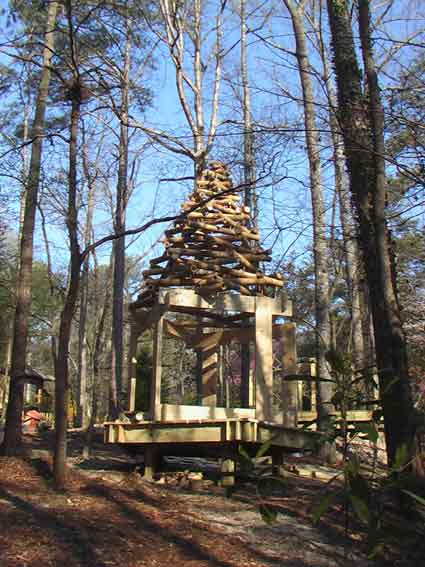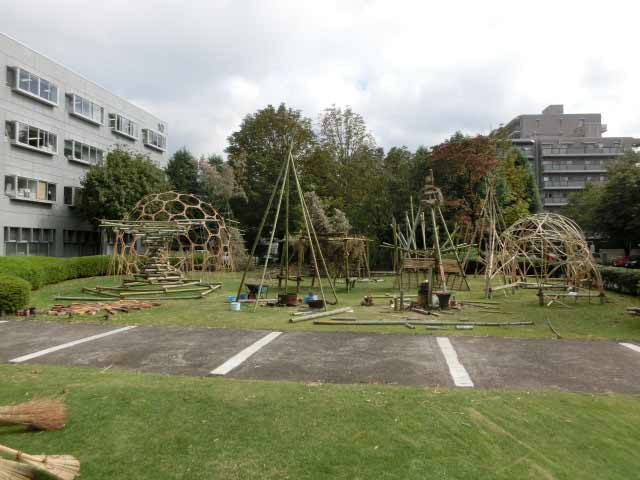at
Musashino Art University, Tokyo, Japan
©2013 Akio Hizume
In the past, I built many Fibonacci Towers in the world except hyperboloid surface as follows.
| zero curvature |  Cone Miami, USA, 2002 |
 Cone Costa Rica, 2007 |
 Cone Atlanta, USA, 2008 |
 Cone Shizuoka, Japan, 2009 |
 Cylinder Kyoto, Japan, 2004 |
 Cylinder Tokyo, Japan, 2008 |
| positive curvature |  Sphere Shiga, Japan, 2008 |
 Catenary Kyoto, Japan, 2004 |
 Catenary Tokyo, Japan, 2006 |
 Catenary Chiba, Japan, 2006 |
 Catenary Tokyo, Japan, 2012 |
 Catenary Shizuoka, Japan, 2013 |
|
I designed a hypervoloidal Fibonacci Tower in 2008 (Manifold #17). 
At last I have realised the hypervoloid one. This is a negaive curvature surface. The tower is based on the Fibonacci Tornado mod 2. We can play unique musical scale by clapping the structure, because the length of members are determined logarithmically. In addition, the structure is effective for collecting rainwater. 
 The five ropes are essentially necessary and enough.  I named this work the "Black Hole."
I named this work the "Black Hole." 
The city design was called "neuro-architecture" but it should be called "Quasi-Crystal City". This event became an annual. This is fourth times.(See the first neuro-architecture.) Students built their own house, cooked dish over fire, sold something by local money, played music there. Everyday I instructed geometry and quasi-periodic music to students in the city. Most of students noticed that quasi-periodic pattern is more humanly than existing rigid system. 
Sometimes the structure were used for play ground for children. Children tried to build themselves something using bamboo. I guess that these geometric structures raised children's creative mind. Sometimes they were also used as a bench for students. Takaaki Bando Hiroyuki Hashiguchi Hiroto Hiyoshi Tomohisa Saito Dept. of Science of Design, Musashino Art University Volunteer Students of the Musashino Art University |